23 Pink Fruits With Names & Images

The world of fruits is a colorful one indeed. And among the many shades it brandishes, pink is one of the more prominent. But you should not only try fruits simply because of their lavish color but also their nutritional value. So, with that in mind, what are the pink fruits you should try?
Raspberry, pomegranate, lychee, watermelon, grapefruit, cactus pear, etc. are some of the best types of pink fruits available. They all have terrific nutritious benefits yet distinct flavor profiles. Additionally, you can try more exotic pink fruits such as dragon fruits, water guava, pearl apples, etc.
Obviously, there are many more pink fruits you can try, originating from different parts of the world. And in this article, we are going to look at these fruits in more detail. We will discuss topics such as their origin, cultivation, availability, taste, and nutritional composition.
Types of Pink Fruit
Bright pink is easily one of the more eye-catching colors on the spectrum. So, fruits that are pink or a shade of pink have also become some of the most popular fruits throughout the world. So, let’s highlight some of them.
Lychee
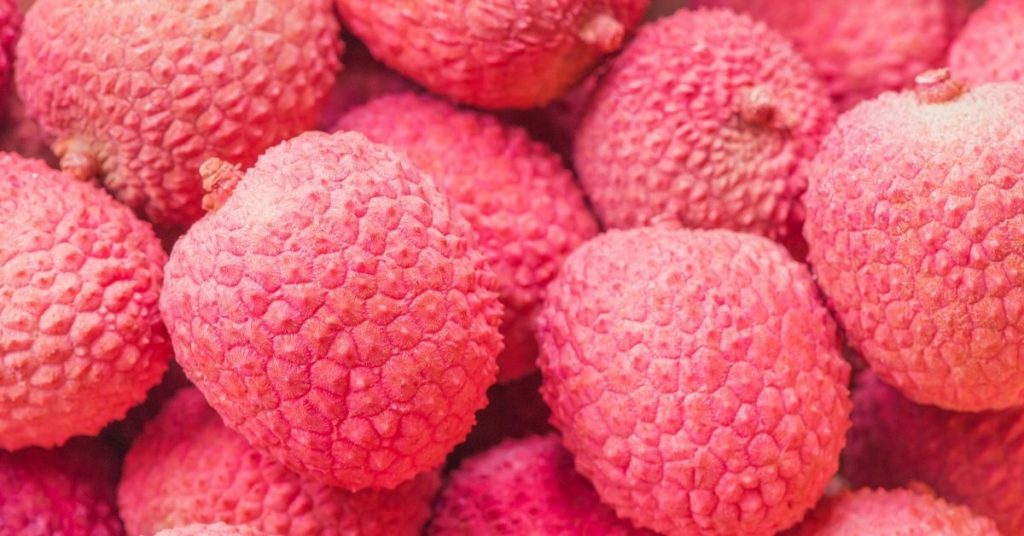
Lychee fruits have a rough and fully pink exterior. But the actual edible flesh inside is white and translucent. This small yet highly juicy pink fruit is native to southeast China but is also cultivated in the Indian subcontinent and Africa.
Ripe lychee is very sweet with a slight hint of acidity, which makes it ideal for a tart or cake recipe. This small, unassuming fruit is full of vitamin C, which acts as a major antioxidant in our body. [1]
Pink Banana
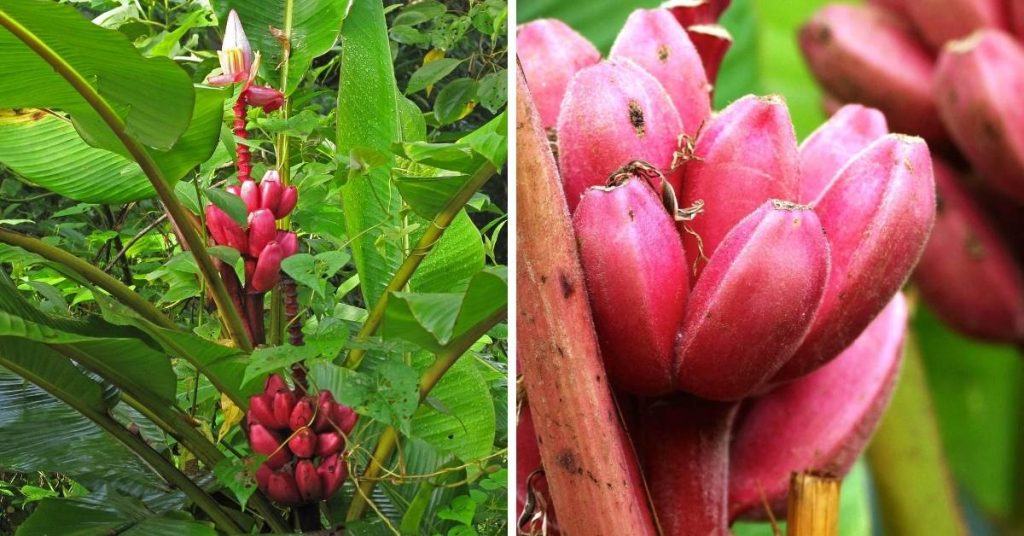
Pink banana is the first of the many fruits that are more exotic, and therefore not readily available. This pink fruit originates from Assam and the eastern Himalayans. But you can also find people cultivating them in different regions for decorative purposes.
The fruits are 8 cm in length with a rich pink hue on the outside. The flesh on the inside is perfectly edible except for the seeds. These seeds can be extra hard so be careful not to chip a tooth.
Cactus Pear

Cactus pear’s appearance reminds me of beetroot and sweet potato. While is pretty popular in hot climates, the rest of the world is not familiar with it, unfortunately. I say unfortunately because pink cactus pear brings a lot of benefits, such as anti-inflammatory properties. In addition, it is a good source of Magnesium and Vitamin C. [2]
It cleans easily and provides you with a mild sweet taste. You can make a delicious jam, ice cream, or smoothie using this pink fruit.
Grapes
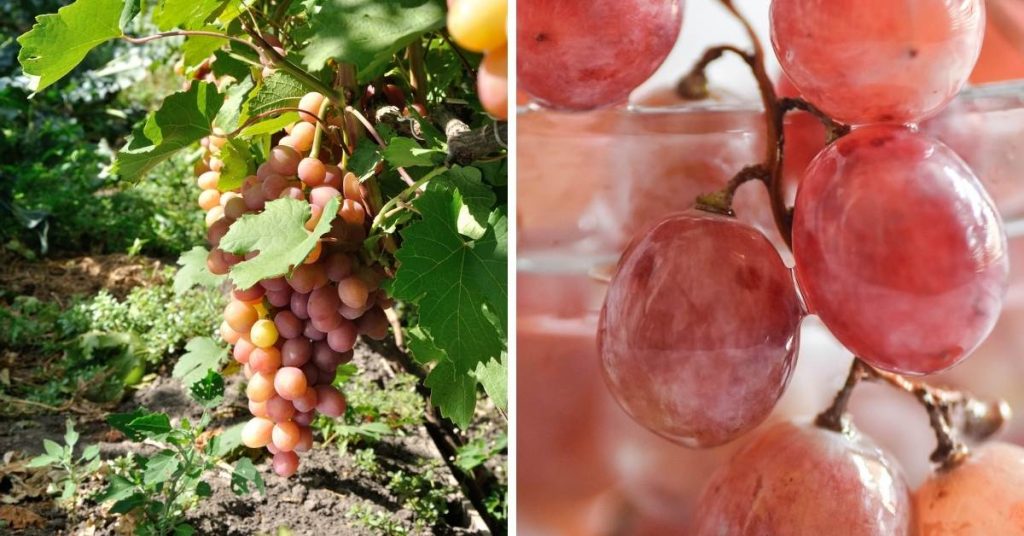
There are many different grape types, including some pink grapes. The best known are Pink Muscatel grapes since they provide you with a floral, sweet aroma that is popular among wine lovers.
Pink Pearl Apple

There are actually several types of apples with a pinkish hue, the pink pearl being one of them. Albert Etter, a breeder from Northern California, developed this unique breed of apple in 1940.
The apple gets its name from the color of its flesh, which is a bright pink complexion. The outer skin has translucent, yellowish-golden color. The apple has a sweet-tart-like taste, which goes really well inside an apple pie.
Pink Lady Apples
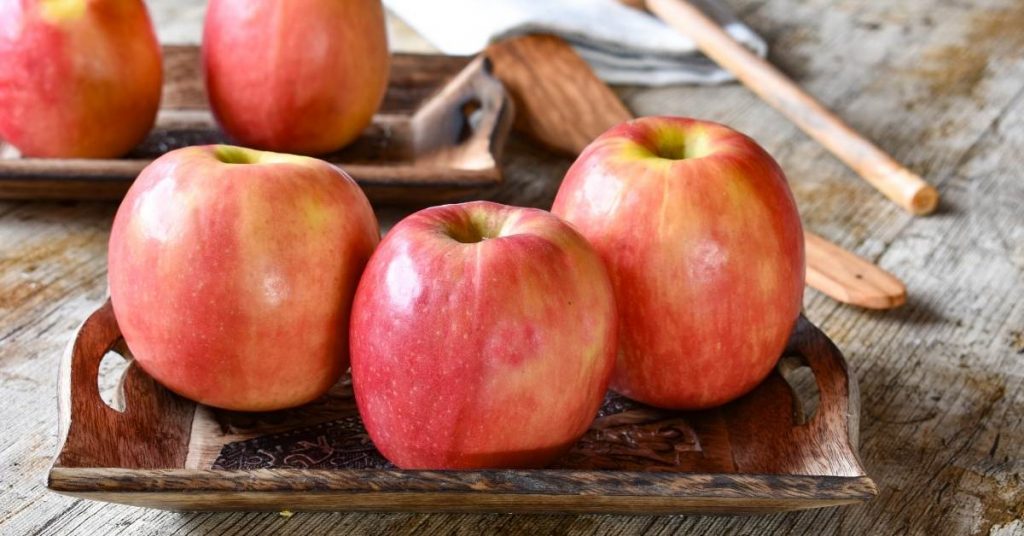
Pink Lady or pink lady apples is another breed of apples with a pinkish complexion. In contrast to the pear apples, these pink fruits have pink on the outside but yellowish flesh on the inside. The pink on the outer skin turns into green near the stalk.
This apple breed was originally invented by John Cripps, hence why this fruit is also referred to as Cripps pink. They possess a sweet taste and have seen cultivation around the world. It is not as tart as Granny Smith apples and not as sweet as Gala apples. Rather it is somewhere in between.
Grapefruit
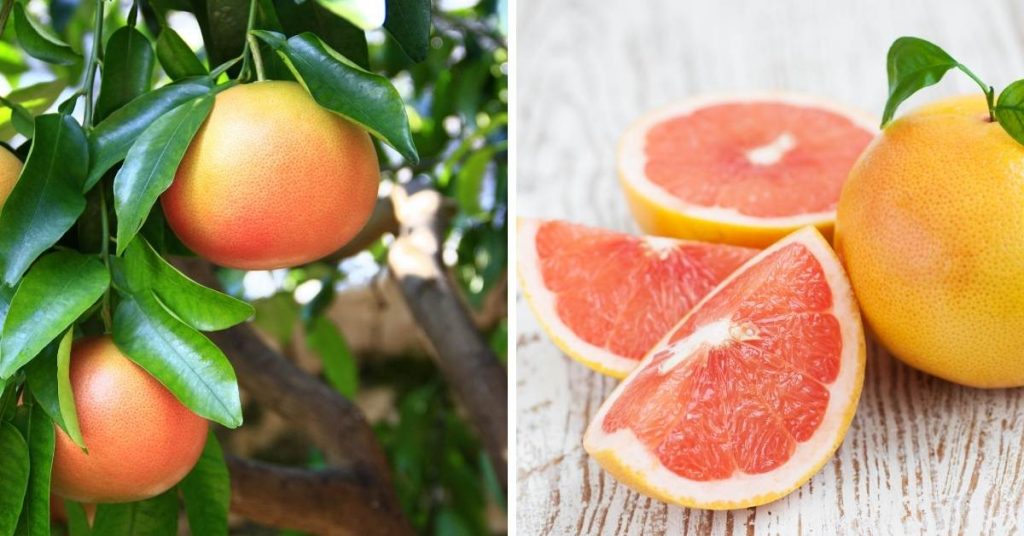
The grapefruit is a large citrus fruit that hails from Barbados as a natural hybrid. Since then, the fruit has seen widespread cultivation around the world, especially in the United States, Brazil, South Africa, Israel. Most of the fruit is made up of juicy flesh.
The fruit is dark pink on the inside and the outside can be green to orange. The taste is often bitter with a hint of sweetness. You can eat the flesh whole or add it to a fruit salad. It is high in vitamins A and C and other antioxidants. In fact, it only trails lemons and oranges in terms of vitamin C content. [3]
Peach
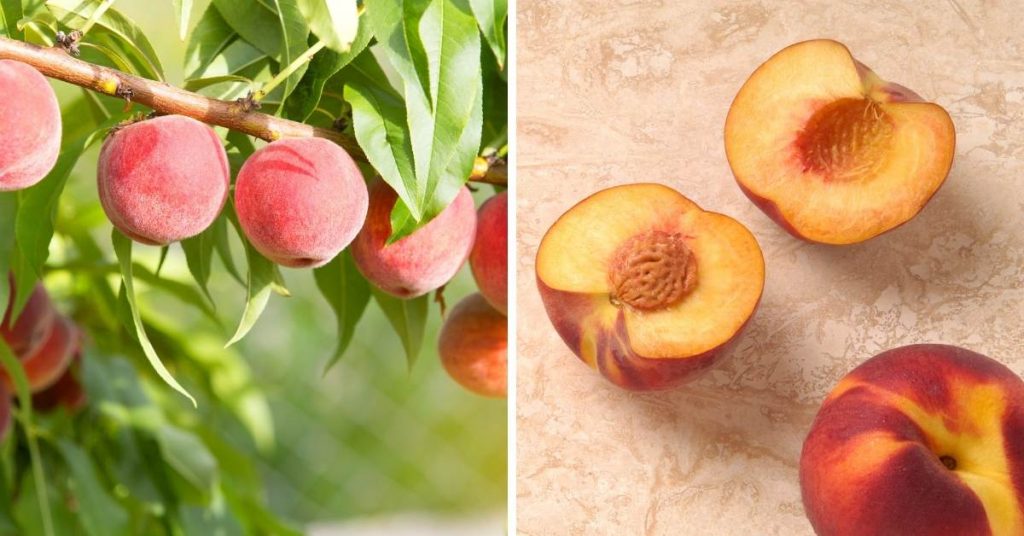
Peaches are a type of stone pink fruit that comes from China. It has a soft, pinkish, outer skin and a soft, yellowish flesh on the inside. When eating it fresh, you always avoid the pit as it contains trace amounts of poison. Peaches are naturally very sweet so they go perfectly in a dessert.
Peach is rich in both vitamins A and C. [4] Peach is a common part of many dessert recipes such as peach pie, cobbler, ice cream, etc. You can also make savory dishes with peaches with chicken or salmon.
Watermelon
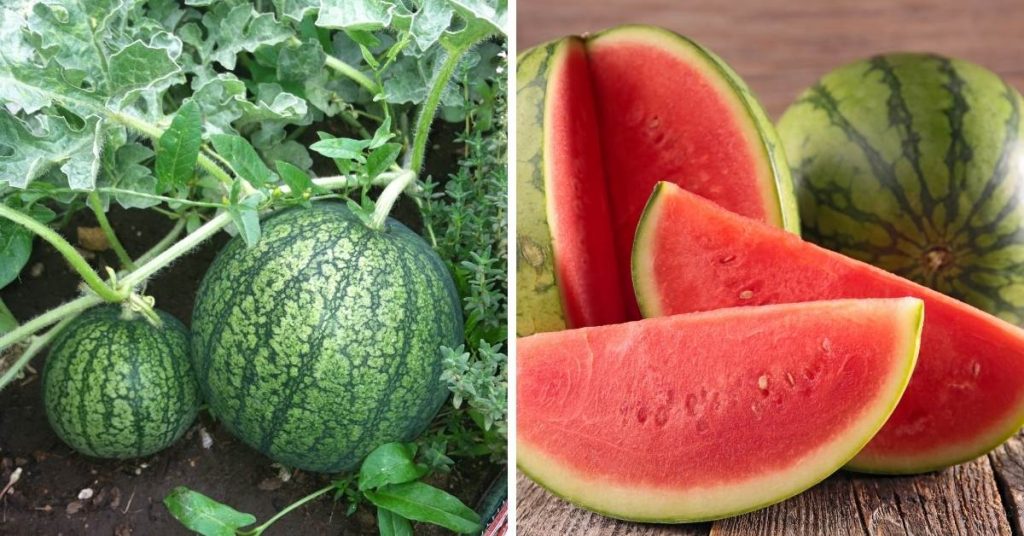
Watermelon is arguably the most iconic summertime fruit, with their striking green and pink color clash being instantly recognizable. Thought to be originating from Northern Africa, this fruit is now cultivated throughout the world and has over a thousand different variations. The most recognizable breed is the one with dark green stripes on the exterior.
The flesh is incredibly juicy as it is more than 90% water. This fruit is a source of vitamin C, potassium, and antioxidants. [5] People mostly eat them whole with the skin still attached, but you can also slice them into small pieces to add them to a summertime salad. Watermelon juice and watermelon-flavored gums and colas are also very popular.
Dragon Fruit
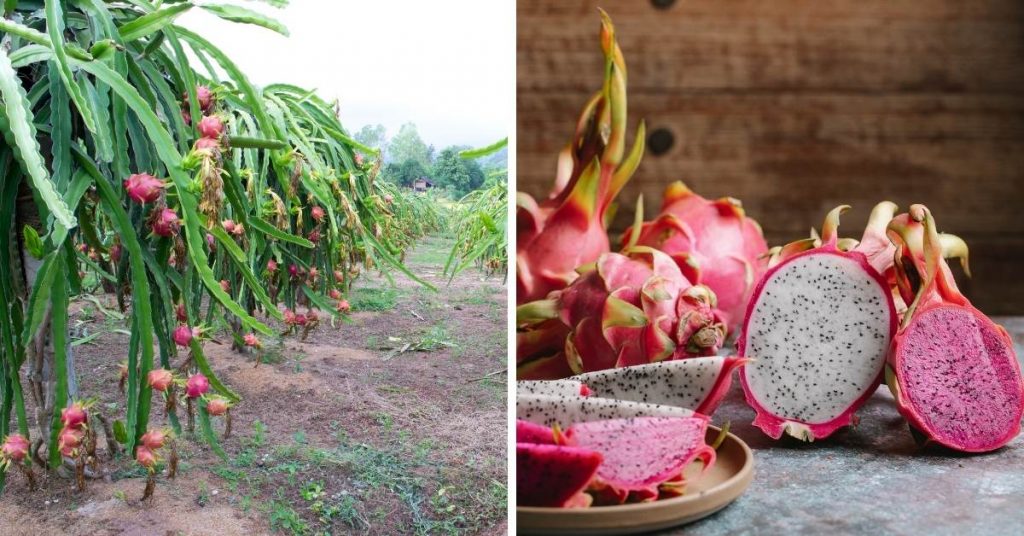
Dragon fruits have almost a mythical reputation among fruits thanks to their name and appearance. The scaly complexion on the outside with a bright pink color resembles the look of a dragon in Chinese mythology. So, the name dragon fruit became popular among consumers.
The flesh on the inside is actually strikingly white with black seeds sprinkled throughout. It tastes sweet but not overbearingly so. You can add dragon fruit to your fruit salad, smoothies, and yogurts as it will add plenty of minerals and antioxidants without many calories. Or you can take a spoon and scoop up the flesh to eat it straight up.
Rose Apple
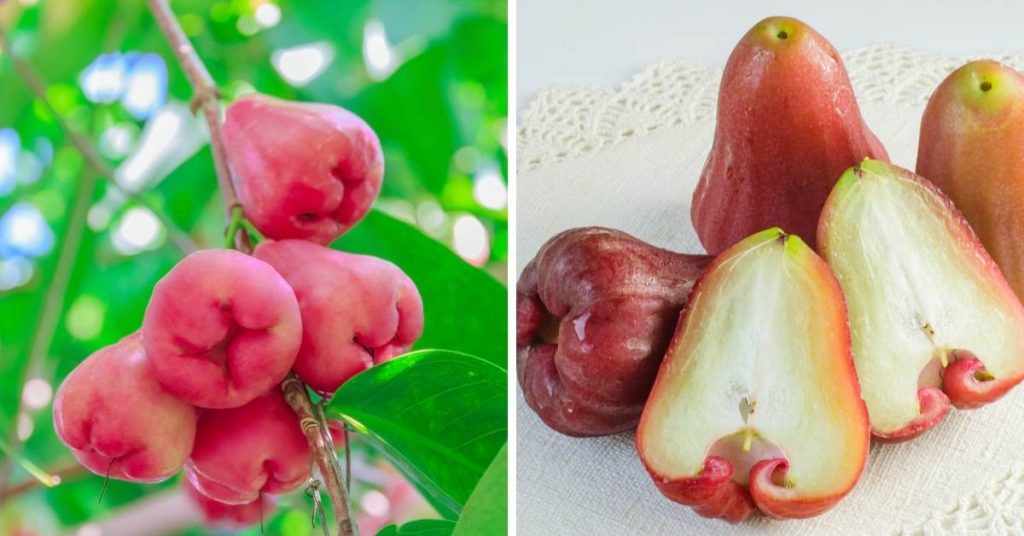
This pink fruit has several names such as rose apple, java apple, wax apple, etc. But despite its name, the rose apple is not technically an apple. Rather it is part of a group of trees in the “Syzygium” family. Although the taste can resemble some apple breeds.
The rose apple is strictly a tropical fruit that naturally grows in Jamaica, Ecuador, India, and parts of the Indian subcontinent. It resembles a bell pepper in shape, with an oval body that expands near the stalk. The skin of this fruit is smooth and thin. It is crunchy on the outside and can be very juicy on the inside.
Rose apples are high in nutrients such as fiber, iron, vitamins A and C. [6] You can add them to your salad or a dessert or simply eat them raw.
Pomegranate
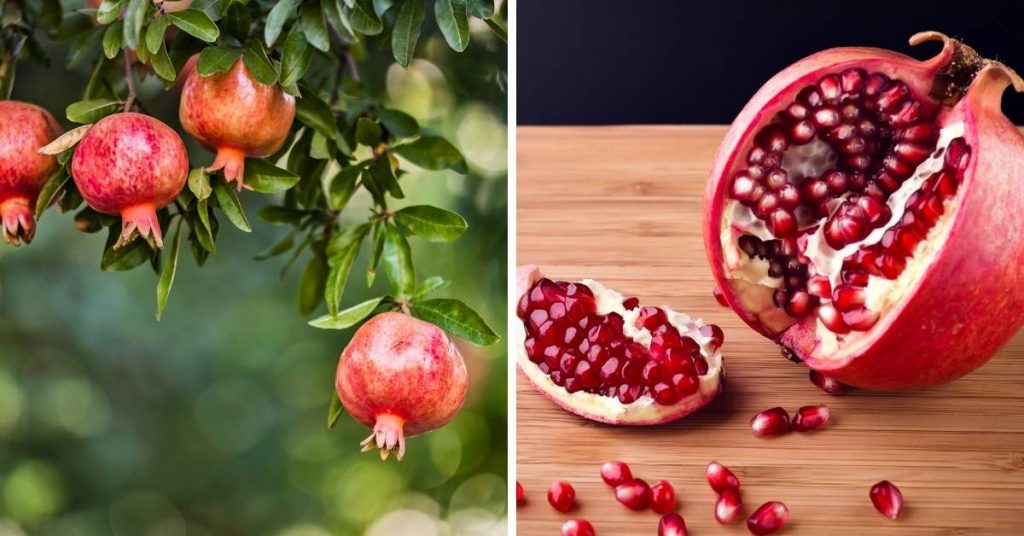
Pomegranates have a tough, pinkish exterior. And on the inside, it houses hundreds of edible seeds that glisten like tiny rubies. These seeds are loaded with antioxidants, dietary fibers, vitamins, and minerals. [7]
Pomegranate trees are usually associated with a warmer climate. They are mostly cultivated throughout the Middle East, Southeast Asia, tropical part of Africa, the Indian subcontinent, and Central Asia.
Apple Guava
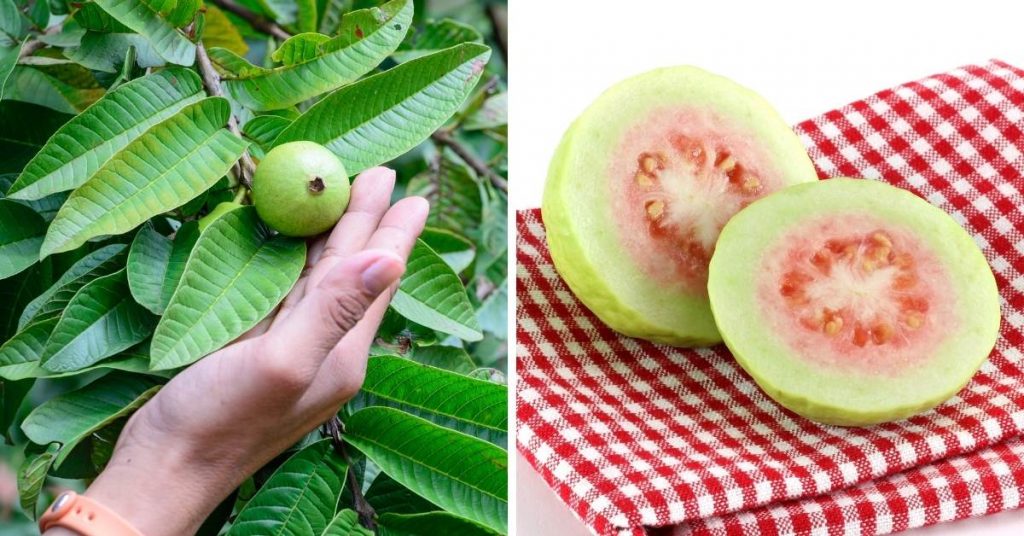
The apple guava or the common guava is a tropical fruit that you will natively find in the Caribbean, Mexico, Central America, and South America. The fruit is often large and rounded, resembling an apple. The outer surface is usually light green and the inside is a bright shade of pink.
Guavas have a naturally sweet flavor that is sort of a mix between pear and apples. You can use guava as a glaze for ham or use candid guava as a dessert treat. You can also eat the whole fruit raw after you properly clean it with water. Guavas are high in vitamin C (even more than oranges) and other antioxidants. [8]
Yangmei
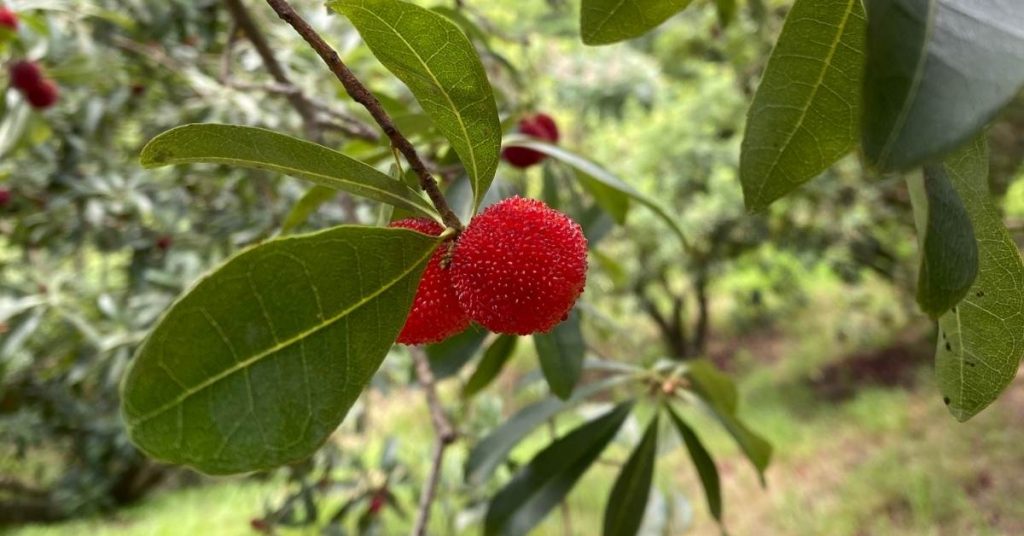
The Yangmei is native Chinese fruit with a small, rough exterior. The color of the skin ranges from dark pink to violet. Despite being called a berry, the fruit is actually a drupe. Meaning it has a single seed in the center which is covered by juicy flesh. The inside of this fruit has a reddish-white complexion.
The fruit has sweetness with a hint of tart, similar to raspberries sort of.
Figs
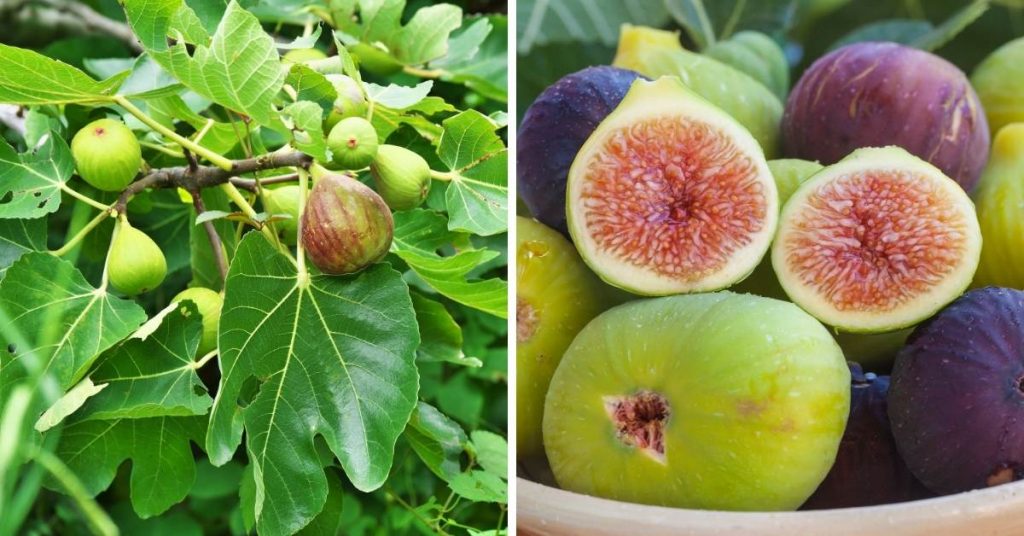
Similar to our previous entry, figs are also never pink on the outside. But they have a soft or vibrant pink hue on the inside. Countries such as Turkey, Egypt, Algeria, and Morocco, are the largest producers of figs in the world. Figs can be a good source of calcium and potassium, which improves bone health.
You can eat figs raw but they are commonly available in a dried form. This makes it easier to transport and store. Dried figs in particular are a great source of dietary fiber, manganese, and iron. [9] You can make jam or jelly with figs. Figs have a taste that resembles peaches and strawberries.
Loganberry
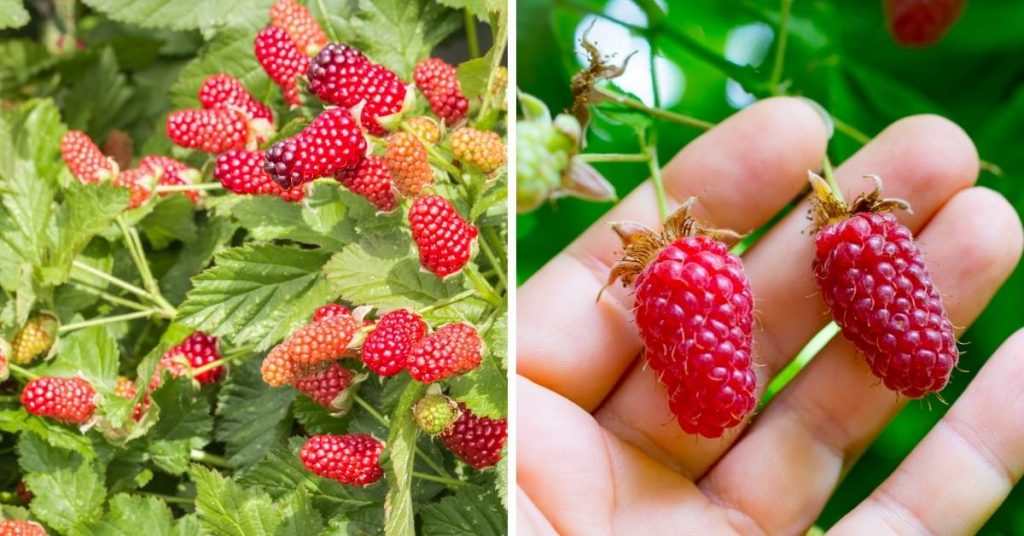
Once again, we have hybrid fruit with a prominent pinkish-red color. The fruit is a cross between blackberry and raspberry, originally introduced in California in 1881. Currently, these berries are cultivated in Oregon, Washington, as well as Australia, and England.
As it is a hybrid of blackberry and raspberry, the taste is somewhere in between. It has a sweet and tart taste. You can incorporate loganberries into your sorbet, ice cream, or yogurt.
Rambutan
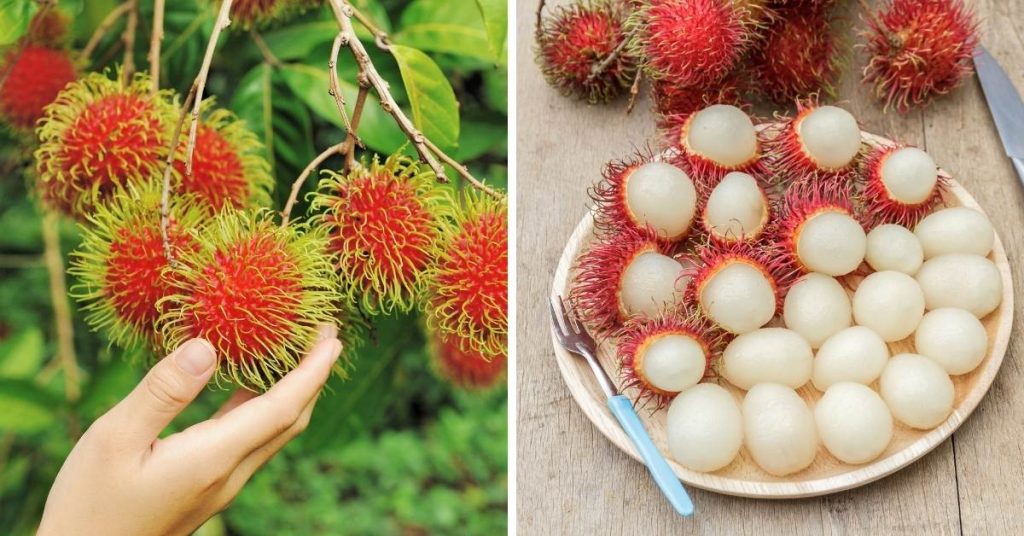
From a distance, you may confuse it for a sea urchin thanks to its prominent, spiky appearance. But Rambutan is an edible, tropical fruit that is native to Southeast Asia. It is, in fact, a close relative to another tropical and pink fruit, lychee. This resemblance extends to the actual flesh of the fruit which is also pearly white.
Unlike lychee, however, the Rambutan actually has a creamy texture. Its taste is naturally sweet. It is cultivated extensively in Mexico, Africa, the Caribbean, Costa Rica, India, Sri Lanka, etc.
Lilly Pilly Berries
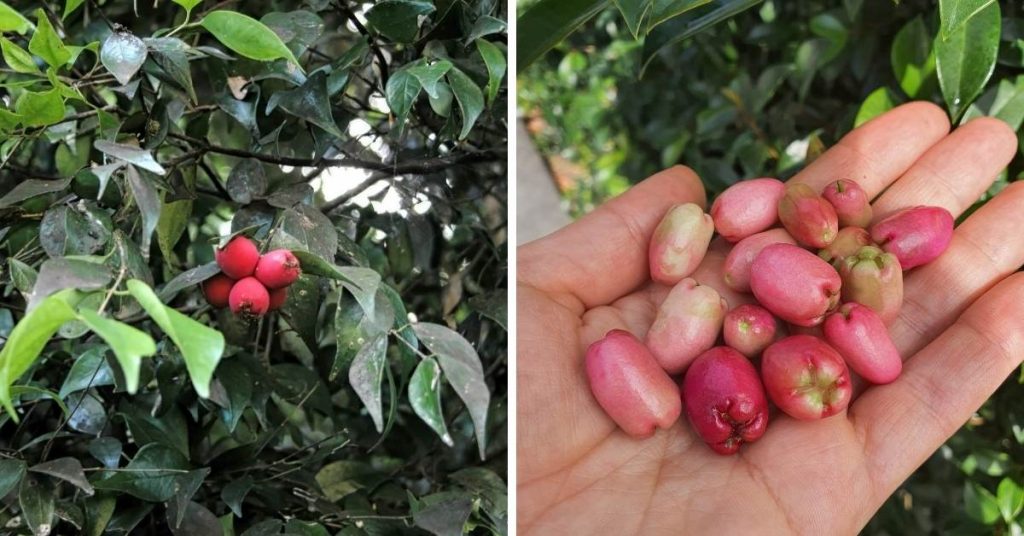
The name is silly but the fruit is stunningly pink in appearance. It is a fruit from the “Syzygium” family of trees. The fruit is small, oval-shaped, and can be 1-2 cm long. The skin is bright pink and is smooth.
It is one of the more popular berry bushes in Australia, where it is a native tree. It has a tart, sweet flavor that resembles a cranberry. It gives a distinct smell of cloves. You can make candied Lilly-pillies, apple crumble with Lily Pily or caramel sauce.
Sampinit
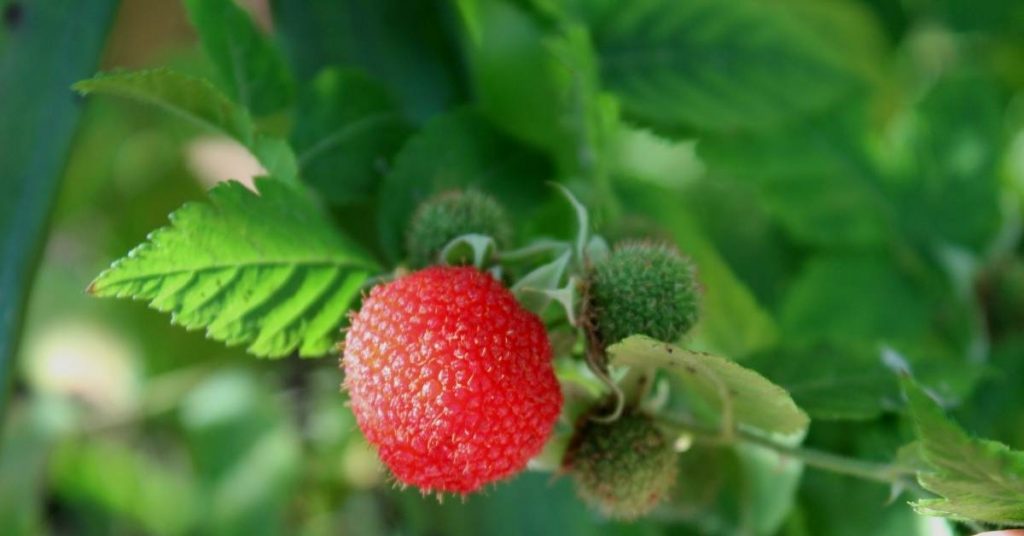
Sampinit is a wild raspberry that is native to the Philippines. Since they are closely related, Sampinit has a taste very similar to raspberries. But their tartness and acidity are more pronounced. They are also smaller and more delicate compared to raspberries. But you can certainly notice the similarities if you put them side by side.
Raspberry
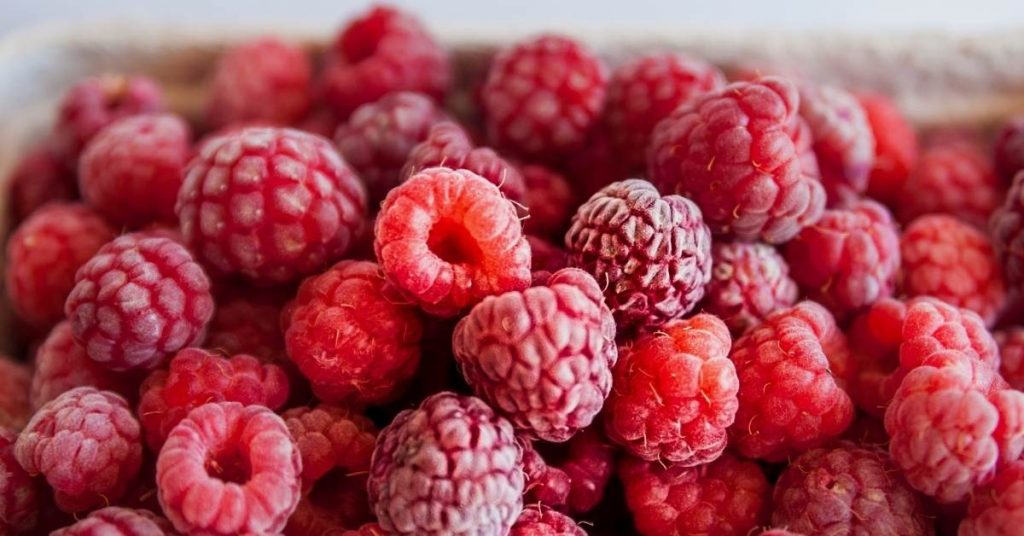
Raspberries are another member of the berry family that is pink and widely popular. But despite having one name, the fruit raspberry can come from multiple different plants belonging to the “Rubus” genus. This fruit is one of the most important commercial fruits throughout modern Europe as well as America and Canada.
People typically eat raspberries fresh, often alongside dessert items such as ice cream, swiss rolls, cakes, or pies. Alternatively, raspberry jam and jelly are also popular throughout the world. They contain a good deal of vitamin C, vitamin K, manganese, iron, and other antioxidants. [10] Raspberries also have anthocyanin, which prevents sunburns by blocking UV rays.
Pink Peppercorn
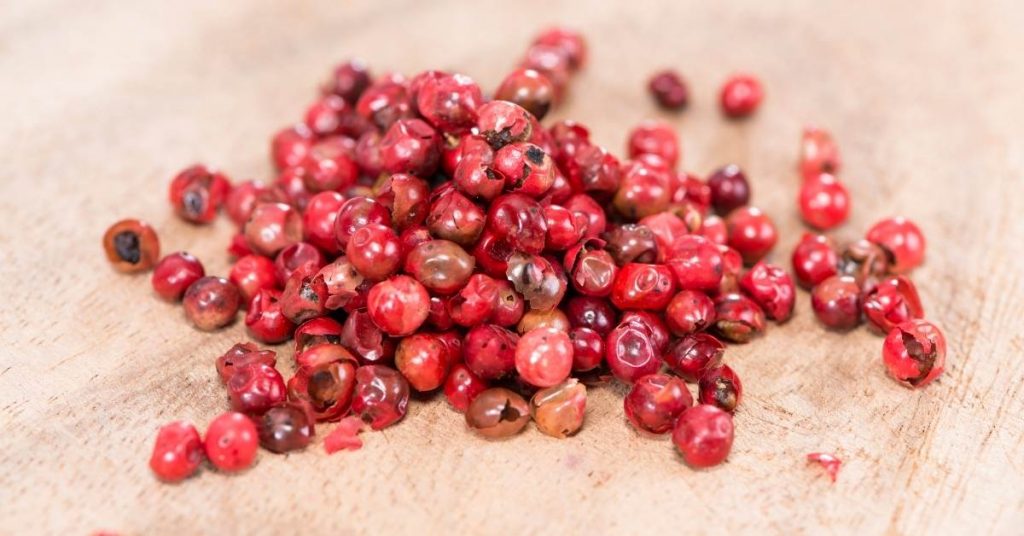
Contrary to what their name suggests, pink peppercorn is not an actual peppercorn. But it does resemble peppercorn in shape and taste. Pink peppercorn has a similar flavor to its black counterpart. Meaning it has a spicy and slightly sweet taste but is noticeably fruitier and brighter. This flavor makes them ideal for sauces or to be used as a dressing.
The pink peppercorn is small and has a bright pink color.
Brazilian and Peruvian pepper trees are where you can acquire these berries. In the US, you can find pink peppercorns in Florida, California, Arizona, and Texas.
Cranberries
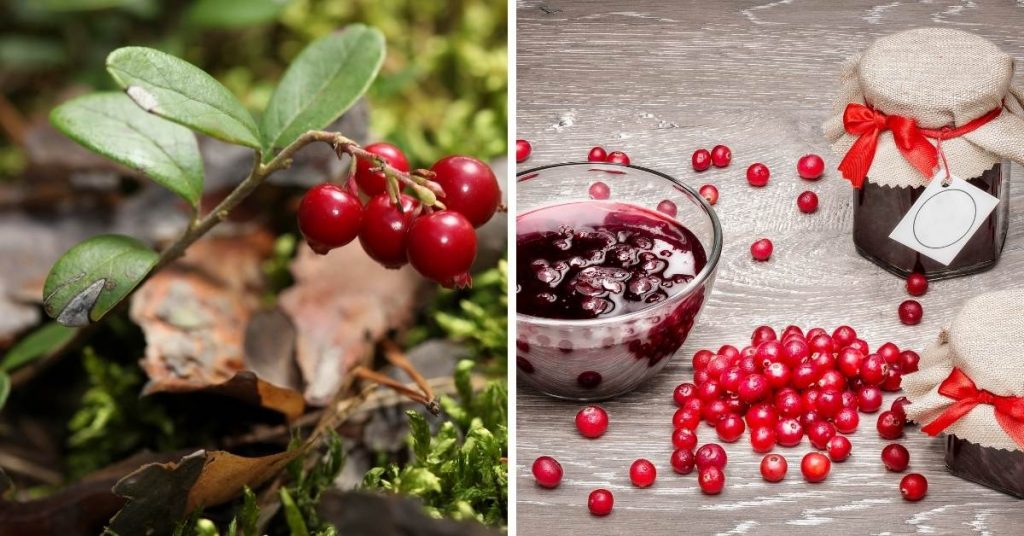
Cranberries can come from any one of multiple shrubs. When ripe, these berries have a dark pink to bright red color. The USA and Canada are the largest producers of cranberries but you can acquire them in many other parts of the world.
Candied cranberries are a common part of granola bars, cereals, and trail mixes. Cranberry juice is also another popular way of consuming this berry. This pink fruit is regarded highly for its high antioxidant content. It is also effective in preventing urinary tract infections and keeping the kidneys functioning. [11]
Pink Pineapples
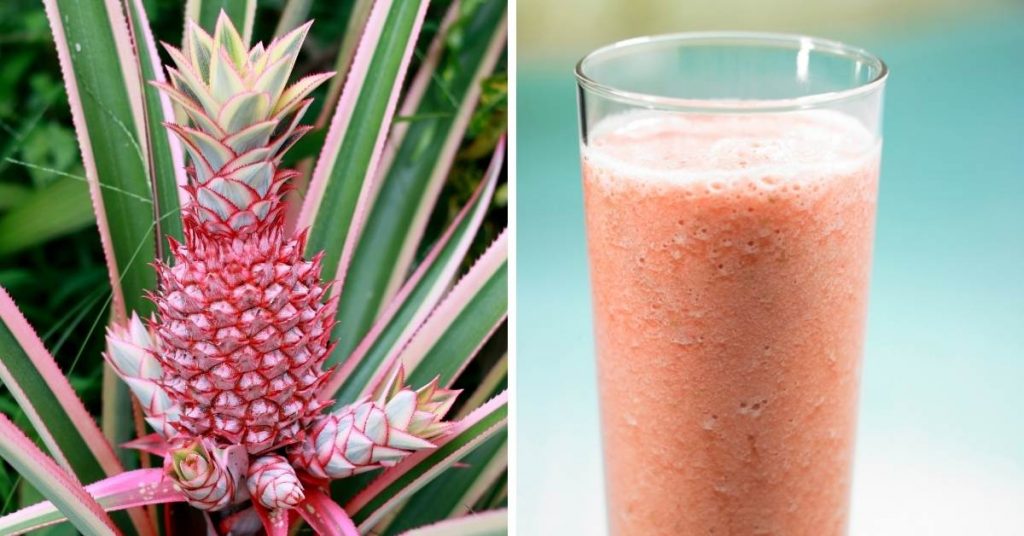
To most people, this will come as quite a surprise. But pink pineapples are indeed a thing, though it is a result of human intervention rather than a natural occurrence. The pink pineapple is a genetically modified fruit that has been given a pale yet distinct, pink complexion.
And the color is not merely on the surface but on the inside as well. Once again, we have the substance “lycopene” to thank for which is the same chemical that naturally makes grapefruits and watermelon pink. So, the fruit is safe to consume without worrying about possible mutations.
Conclusion
Fruits are a wonderful gift of nature, with so much diversity and color. Hopefully, this article will inspire you to try out new fruits from around the world, exposing your taste buds to brand new flavors and textures.
